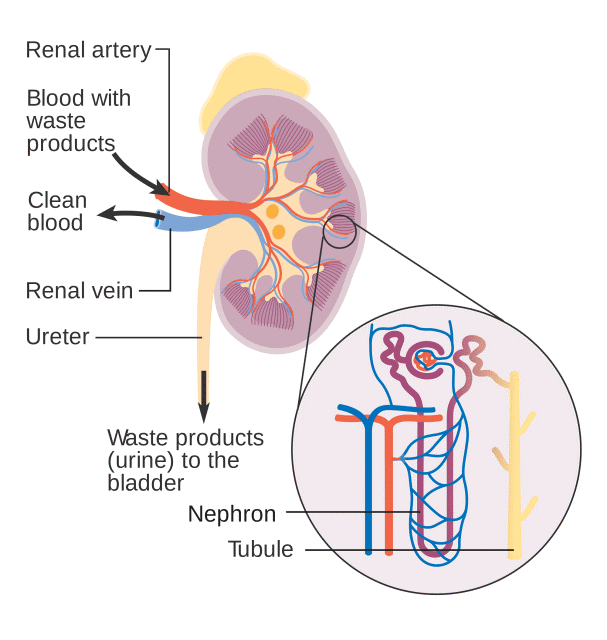After the brain, the kidney is usually affected the most by the toxins that are not cleared out by the liver. Our bodily wastes are mainly secreted by the kidneys; therefore, the kidneys encounter almost all the toxins coming from the entire body. If the liver does not promptly convert toxins, they can irritate the kidney and cause kidney inflammation. Distressed kidneys have decreased efficiency when secreting metabolic waste molecules, liquid, and balancing the minerals. The retention and accumulation of our own metabolic wastes, liquid, and mineral imbalance can cause more profound distress to our body than the toxic chemicals. People may experience restlessness, waking up at night without falling back to sleep, and water retention. The toxic effect of the metabolic wastes on the nerves can cause hot flashes and hearing loss. These wastes can also further damage the microcapillaries structure causing poor microcirculation. Because our joint cartilage tissue and spinal discs do not have blood vessels, they rely on the diffusion of nutrients supplied through microcirculation. The joint and disc structure will be poorly supported when microcirculation function is compromised, which will result in early degeneration of joints and discs. Our hair follicles are very sensitive to these wastes and hair loss is a commonly associated symptom. Mineral imbalance can disturb muscle contractions for both skeletal muscle and smooth muscle which controls our internal organs such as heart and gut. Low potassium levels due to kidney toxicity can cause extreme fatigue, muscle spasms, and weakness. Kidney toxicity can also cause retention of calcium in the blood which is also very harmful and can cause muscle weakness. High calcium levels are very dangerous. Even slightly higher calcium levels can cause excessive muscle relaxation in the form of muscle weakness and tiredness. Skeletal muscle weakness can result in easily injured muscles and frequent muscle pain. Muscle weakness can also cause joint instability and make joints more easily injured and trigger early joint degeneration. The retention of uric acid, one of the waste molecules, can result in the deposition of uric acid in the joints and can cause joint damage with symptoms of frequent joint pain.

Toxic chemicals will become less toxic or non-toxic substances after being converted by the liver. The chemical modification processes are usually carried out by liver enzymes which incorporate a -CH3, =O, or -OH group into the toxic compounds. The chemically modified end products are water-soluble so the kidney will be able to filter them out of the system. When liver function is enhanced, the liver will actively convert the accumulated chemical toxins but the end products can still overload the kidneys which has been weakened by previous toxic chemical exposures.
*These statements have not been evaluated by the Food and Drug Administration. This product is not intended to diagnose, treat, cure or prevent any disease.
In order to ensure proper use of our high-quality herbal products, Wei Laboratories only sells to licensed health care practitioners.








